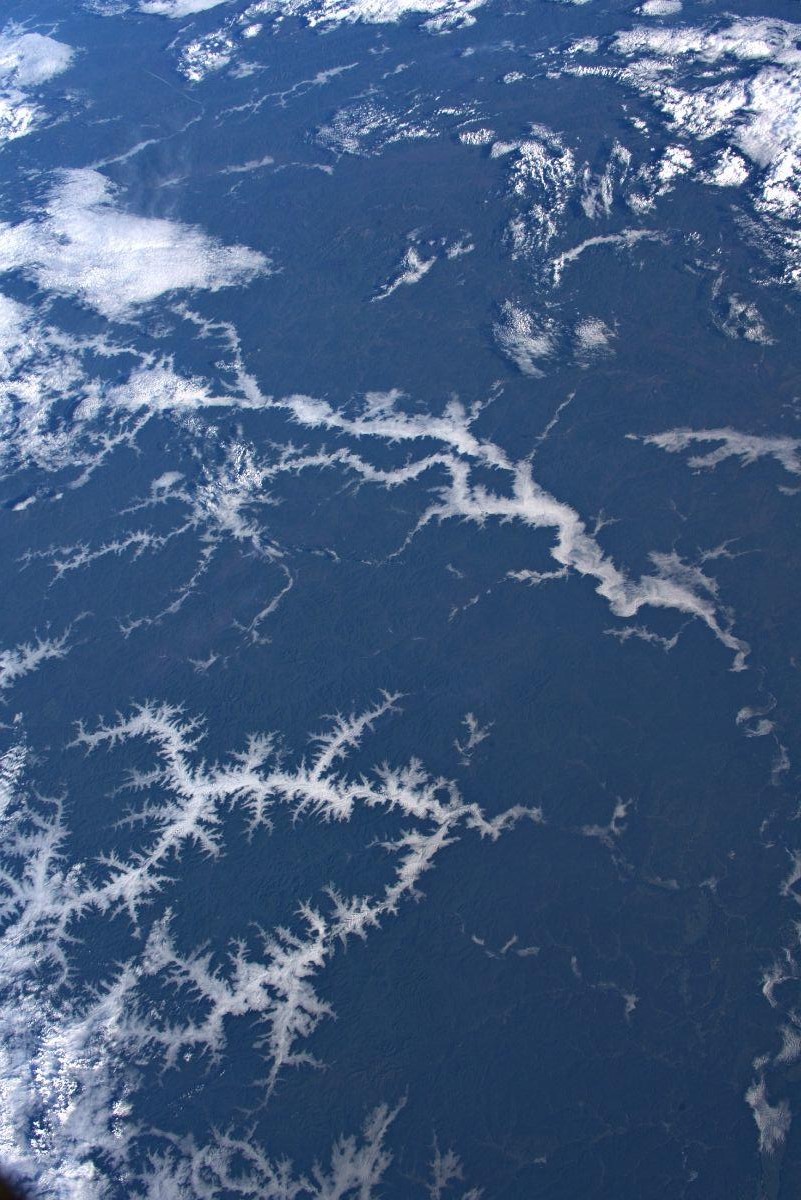[:ja]ルカ・パルミタノ宇宙飛行士がISSから撮影した中国、黒竜江省付近のアムール川です。

アムール川は、ユーラシア大陸の北東部を流れる川で、中国では別に黒河、黒水などとも呼ばれます。上流部の支流を含めた全長4,368kmは世界8位、流域面積は185万5500km2で世界10位です。源流はモンゴル高原東部のロシアと中国との国境にあるシルカ川とアルグン川の合流点付近で、中流部は中国黒竜江省とロシア極東地方との間の境界となっています。ロシアのハバロフスク付近で北東に流れを変えロシア領内に入り、オホーツク海のアムール・リマンに注ぎます。オホーツク海の流氷は、アムール川からの流水により塩分濃度が薄くなったことによって凝固点が高くなった海水が氷結して形成されます。
黒河市の黒河(アムール川)の地上の様子はこちらです。

参考文献: Luca Parmitano’s Tweet
地球俯瞰画像を見る: LiVEARTH
[Earthview Wonders] No.1132: Amur River🇨🇳🇷🇺
Astronaut Luca Parmitano captured from ISS Amur River (Heilong Jiang) in Heilong Jiang Province, China.

The Amur is the world’s 10th longest river, forming the border between the Russian Far East and Northeastern China. The Amur proper is 2,824km long, and has a drainage basin of 1,855,000km2. The river rises in the hills in the western part of Northeast China at the confluence of its two major affluents, the Shilka and the Argun (or Ergune). It flows east forming the border between China and Russia, and slowly makes a great arc to the southeast, receiving many tributaries and passing many small towns. At Huma, it is joined by a major tributary, the Huma He. Afterwards it continues to flow south until, between the cities of Blagoveshchensk in Russia and Heihe in China, it widens significantly as it is joined by one of its most important tributaries the Zeya. The river basin is home to a variety of large predatory fish such as northern snakehead, Amur pike, etc.
The local scenery on the ground is as follows.

Reference: Luca Parmitano’s Tweet
See earthview photo gallery: LiVEARTH[:en][Earthview Wonders] No.1132: Amur River🇨🇳🇷🇺
Astronaut Luca Parmitano captured from ISS Amur River (Heilong Jiang) in Heilong Jiang Province, China.

The Amur is the world’s 10th longest river, forming the border between the Russian Far East and Northeastern China. The Amur proper is 2,824km long, and has a drainage basin of 1,855,000km2. The river rises in the hills in the western part of Northeast China at the confluence of its two major affluents, the Shilka and the Argun (or Ergune). It flows east forming the border between China and Russia, and slowly makes a great arc to the southeast, receiving many tributaries and passing many small towns. At Huma, it is joined by a major tributary, the Huma He. Afterwards it continues to flow south until, between the cities of Blagoveshchensk in Russia and Heihe in China, it widens significantly as it is joined by one of its most important tributaries the Zeya. The river basin is home to a variety of large predatory fish such as northern snakehead, Amur pike, etc.
The local scenery on the ground is as follows.

Reference: Luca Parmitano’s Tweet
See earthview photo gallery: LiVEARTH[:]